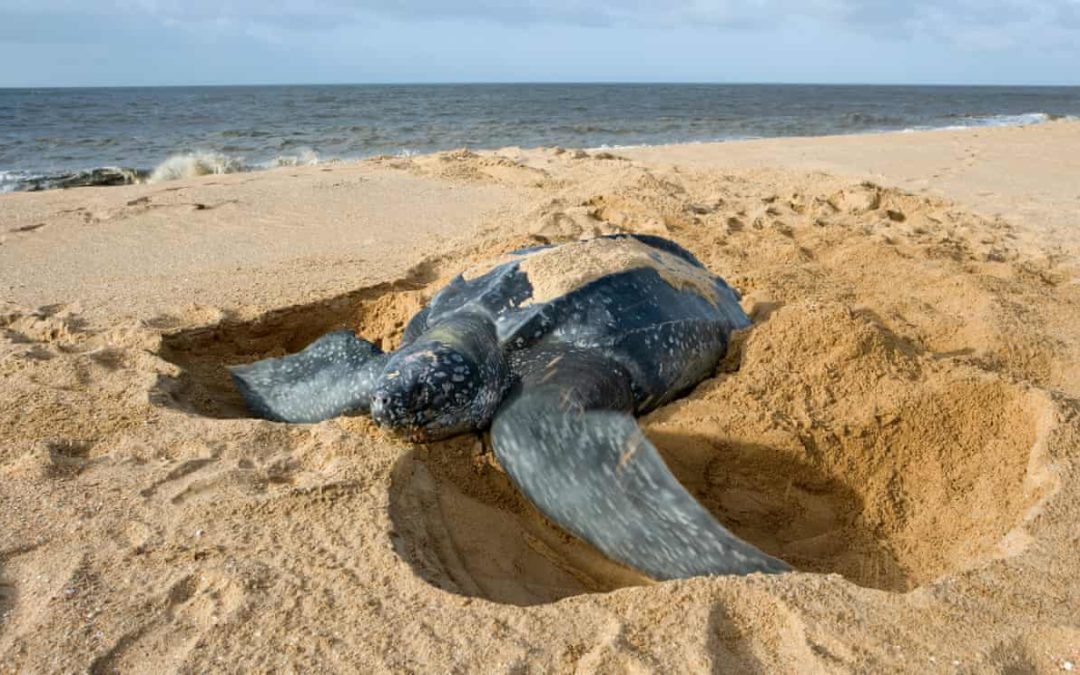SOURCE: The Guardian
DATE: April 15, 2019
SNIP: Every year, from November through March, leatherback sea turtles arrive to the secluded shores of the Río Escalante Chacocente wildlife reserve on Nicaragua’s Pacific coast to lay their eggs.
Though leatherback nesting habits vary, Chacocente has been a reliable egg-laying site for as long as conservationists have collected nesting data.
But this year, not a single leatherback came to Chacocente, and conservation groups in Costa Rica and Mexico, have recorded declines in sightings of the huge turtles.
Leatherback populations face threats from human activity, and the eastern Pacific population of leatherbacks is classified as critically endangered.
Both legal and illegal fishing have helped drive the decline, as well as egg poaching. In Central America sea turtle eggs are considered a delicacy and in some communities are held to be an aphrodisiac.
While conservation efforts have focused on countering human harvesting of turtles, there is also growing evidence that warming temperatures could play a role in the population decline.
In leatherbacks and other species of sea turtles, the sex of a turtle hatchling is determined by the temperature of the sand where the egg incubated. Higher temperatures produce female eggs, and scientists suspect that a large portion of sea turtle hatchlings are now female.

